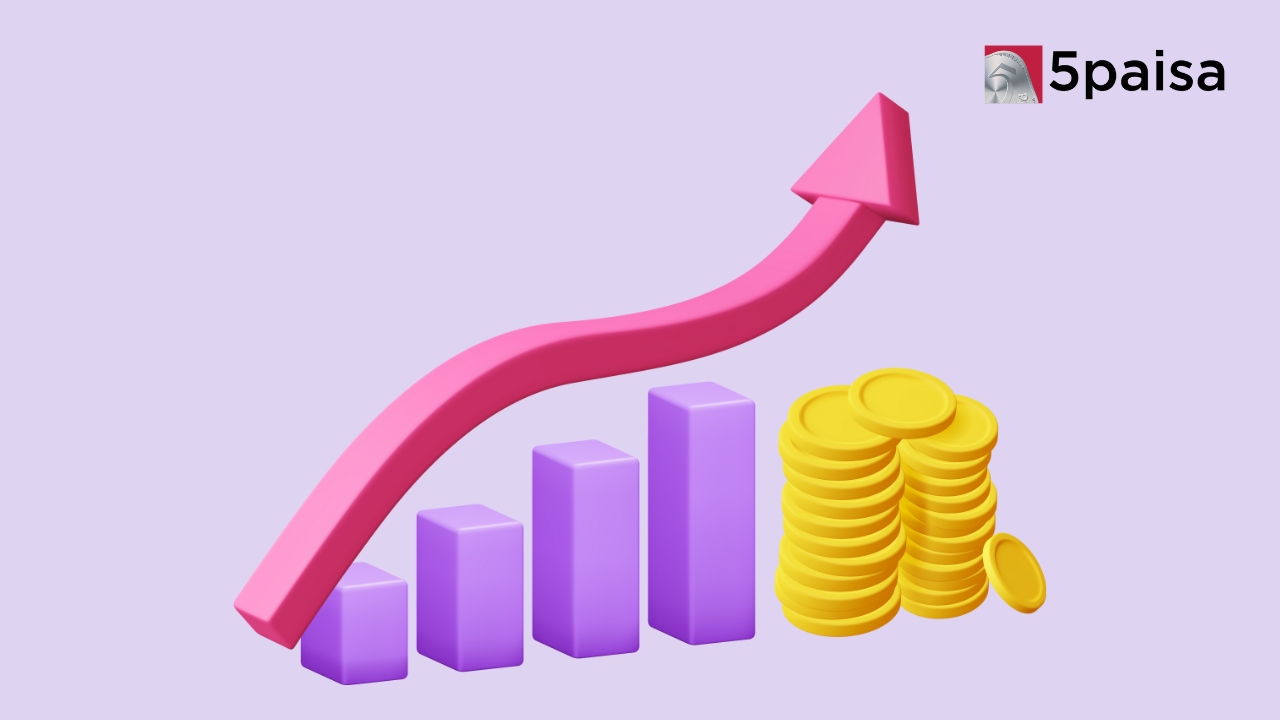Best One Time Investment Plan with High Returns

Last Updated: 19th July 2023 - 03:21 pm
Investing money is crucial to building wealth and securing a financially stable future. One of the key investment strategies that individuals consider is one-time investment plans. These plans offer the opportunity to make a single lump sum investment, which has the potential to generate high returns over time.
The concept of one-time investment plans is based on putting a significant amount of money into various financial instruments, such as stocks, mutual funds, bonds, or real estate, with the expectation of capital appreciation and income generation. Unlike regular savings accounts or recurring investments, one-time investment plans allow individuals to invest a larger sum of money in a single instance, potentially maximizing the growth potential.
The appeal of the best one-time investment plans lies in their potential for higher returns than traditional savings methods. By investing a substantial amount upfront, individuals can take advantage of the power of compounding and the potential growth of their chosen investment vehicle. This can help them achieve their financial goals faster, whether funding a child's education, saving for retirement, or fulfilling long-term dreams.
When considering the best one-time investment plan with high returns, evaluating various factors such as risk tolerance, investment goals, and time horizon is essential. Different investment options offer varying degrees of risk and return potential. It is crucial to understand the pros and cons of each option and select the one that aligns with individual financial objectives and risk appetite.
What are One-time Investment Plans?
One-time investment plans refer to investment strategies where individuals make a single lump sum investment instead of recurring or periodic investments. It involves investing significant money into various financial instruments to generate high returns over time.
The best one-time investment plan with high returns is designed to allow individuals to grow their wealth through a single substantial investment. Unlike regular savings accounts or systematic investment plans, which involve making smaller contributions at regular intervals, one-time investment plans allow individuals to invest more money in a single instance.
The best one-time investment plans typically involve investing in stocks, bonds, mutual funds, real estate, or other financial instruments. The choice of investment vehicle depends on factors such as the individual's risk tolerance, investment goals, and time horizon. Some may prefer the potential for high returns associated with stocks or mutual funds, while others may opt for the stability and fixed returns of bonds or real estate.
The best one-time investment plan with high returns offers individuals an opportunity to make a significant investment and potentially reap substantial rewards over time. It is essential to consider personal financial circumstances, goals, and risk tolerance when determining the suitability of such plans.
Top 10 One-Time Investment Plans in India
India offers diverse investment opportunities for individuals seeking the best one-time investment plan with high returns. Several investment options are available, whether it's for long-term wealth accumulation, retirement planning, or fulfilling short-term financial goals. These plans cater to different risk profiles, investment amounts, and financial objectives. Investors can choose from various asset classes, including mutual funds, fixed deposits, stocks, real estate, etc. The top 10 best one-time investment plans in India encompass a mix of options that provide the potential for growth, stability, and tax benefits.
1. Mutual Funds
Mutual funds are popular among investors seeking diversification and professional management. They pool money from multiple investors to invest in a diversified portfolio of stocks, bonds, or other assets. Mutual funds offer the advantage of professional fund management, allowing investors to benefit from the expertise of experienced fund managers. They provide access to various investment strategies, asset classes, and risk profiles, making them suitable for different investor preferences. Mutual funds offer the potential for higher returns over the long term, making them an attractive option for individuals looking for growth-oriented investments.
2. Fixed Deposits (FD)
Fixed deposits are a conservative investment option that offers stability and guaranteed returns. They involve depositing a lump sum with a bank or financial institution for a fixed period at a predetermined interest rate. Fixed deposits are known for their low-risk nature, making them suitable for investors with a low-risk tolerance. They provide a fixed rate of return, ensuring a predictable income stream. Fixed deposits are easily accessible, and the investment period can range from a few months to several years, allowing investors to choose a term that aligns with their financial goals.
3. Public Provident Fund (PPF)
The Public Provident Fund (PPF) is a government-backed long-term investment scheme. It offers attractive tax benefits and a fixed interest rate. PPF accounts have a maturity period of 15 years and can be extended in blocks of five years. PPF is known for its safety, tax efficiency, and the power of compounding, making it a popular choice for long-term wealth creation.
4. National Pension System (NPS)
The National Pension System (NPS) is a government-sponsored retirement savings scheme. It allows individuals to build a retirement corpus by investing in equity, corporate bonds, and government securities. NPS offers market-linked returns and tax benefits. It provides flexibility in investment options and allows partial withdrawals under specific conditions.
5. Real Estate
Real estate investment can be the best one-time investment plan with high returns. It involves purchasing properties such as residential, commercial, or rental properties with the expectation of appreciation in value over time. Real estate investments can provide a stable income through rental payments and potential capital appreciation. However, real estate investments require careful research, as they involve substantial capital and can be illiquid. When evaluating real estate investment opportunities, investors need to consider factors such as location, property type, market conditions, and potential rental yields.
6. Stocks
Investing in stocks provides an opportunity to participate in the growth of publicly traded companies. Stocks offer the potential for capital appreciation and dividend income. However, stock market investments are subject to market volatility and require a thorough understanding of company fundamentals, market trends, and risk management strategies.
7. Gold
Gold has always been considered a safe haven investment. It acts as a hedge against inflation and market volatility. In India, individuals can invest in physical gold (jewelry, coins) or gold exchange-traded funds (ETFs) that track the price of gold. Gold investments provide liquidity and diversification benefits to an investment portfolio.
8. Bonds
Bonds are fixed-income securities issued by governments or corporations. They pay periodic interest until maturity when the principal amount is returned. Bonds offer stable returns and can be suitable for risk-averse investors seeking regular income. Government and highly-rated corporate bonds are considered less risky than lower-rated bonds.
9. Exchange-Traded Funds (ETFs)
Exchange-Traded Funds (ETFs) are investment funds that trade on stock exchanges like individual stocks. ETFs offer diversification by tracking specific indices or sectors. They allow investors to gain exposure to a wide range of assets, including stocks, bonds, commodities, or currencies. ETFs are known for their low costs, transparency, and flexibility.
10. Initial Public Offerings (IPOs)
Investing in Initial Public Offerings (IPOs) allows individuals to buy shares of companies when they are first listed on the stock market. IPOs can provide significant returns if the company performs well. However, investing in IPOs carries inherent risks as the company may be unproven, and the market demand for the shares may fluctuate. Thorough research and analysis of the company's fundamentals and future prospects are essential.
It's important to note that the best one-time investment plan with high returns varies for each individual based on their financial goals, risk tolerance, and investment preferences. It is advisable to consult with a financial advisor or conduct thorough research before making any investment decisions.
Advantages of One-Time Investment Plans
One-time investment plans offer several advantages for individuals looking to grow their wealth or achieve specific financial goals. These investment options provide convenience, the potential for high returns, and flexibility in investment choices. Understanding the advantages of one-time investment plans can help individuals make informed decisions and optimize their investment strategies.
● Potential for Higher Returns
The best plan for a one-time investment has the potential to generate higher returns compared to traditional savings accounts or recurring investments. Individuals can take advantage of the power of compounding and potential growth by making a substantial investment upfront.
● Convenience
The best one-time investment plan with high returns offers convenience as individuals only need to make a single investment rather than regularly monitoring and managing multiple transactions. This makes it a hassle-free option, particularly for those with busy schedules or limited investment knowledge.
● Flexibility
The best one-time investment plan with high returns provides flexibility in choosing the investment vehicle that suits individual preferences and risk appetite. Investors can select from various options, such as stocks, mutual funds, or fixed deposits, based on their financial goals and risk tolerance.
● Diversification
The best one-time investment plan with high returns allows individuals to diversify their investment portfolio. By investing in different asset classes or sectors, they can spread their risk and potentially minimize losses. Diversification helps to protect against market fluctuations and economic uncertainties.
● Potential Tax Benefits
Tax benefits may be associated with the best one-time investment plan with high returns depending on the investment option chosen. For example, investments in schemes like Public Provident Fund (PPF) and National Pension System (NPS) offer tax advantages, which can help individuals optimize their tax liability.
● Long-Term Wealth Accumulation
The best one-time investment plan with high returns is often focused on long-term wealth accumulation. By making a substantial investment early on, individuals can give their money more time to grow and potentially achieve their financial goals, such as funding retirement or purchasing a property.
Disadvantages of One-Time Investment Plans
While one-time investment plans have their advantages, it's essential to be aware of the potential disadvantages they may entail.
● Market Volatility
One of the significant disadvantages of the best one-time investment plans is the exposure to market volatility. The value of investments can fluctuate over time, and economic or market conditions can impact returns. If the investment is made during a market downturn, it may take longer to recover or result in temporary losses.
● Timing Risk
Timing the market correctly is challenging, even for experienced investors. Making a one-time investment exposes individuals to the risk of investing at an unfavorable time, such as during a market peak. Poor timing can result in lower returns or potential losses.
● Lack of Cost Averaging
The best plan for a one-time investment does not benefit from the concept of cost averaging. Regular investments, such as systematic investment plans (SIPs), allow individuals to buy more units when prices are low and fewer units when prices are high. With a one-time investment, individuals may miss out on this advantage.
● Limited Flexibility
Once a one-time investment is made, it may not be easy to make changes or exit the investment without incurring costs or penalties. This lack of flexibility can be a disadvantage if financial circumstances or investment goals change over time.
● Concentrated Risk
A one-time investment plan with a high return may result in concentrated risk depending on the investment option chosen. For example, investing significantly in a single stock or sector can expose the investment to specific company or industry risks. Diversification, which helps reduce risk, may be limited in some one-time investment plans.
● Potential for Losses
All investments come with risk, and one-time investment plans are no exception. Losses are always possible, especially if the selected investment vehicle underperforms or if market conditions are unfavorable.
Factors Affecting One-time Investment Plan Decisions
Several factors influence the decision-making process when selecting the best 1-time investment plan. Here are some key factors to consider:
1. Risk Tolerance
The level of risk an individual is comfortable with is a critical factor. Some best one-time investment plans with high returns, such as stocks or real estate, carry higher risks but also offer the potential for higher returns. On the other hand, conservative investors may prefer options like fixed deposits or bonds, which provide stability but may offer lower returns.
2. Financial Goals
The specific financial goals an individual wants to achieve play a significant role in determining the best one-time investment plan with high returns. Option with lower risk and quicker liquidity, like fixed deposits, may be preferred if the goal is short-term, such as saving for a down payment on a house.
3. Time Horizon
The time available to invest before needing the funds affects the choice of the best 1-time investment plan. Longer time horizons allow more aggressive investment options with higher potential returns and volatility. Shorter time horizons may necessitate more conservative options to protect the principal amount.
4. Investment Knowledge and Experience
Individuals with a good understanding of financial markets and investment instruments may be comfortable exploring complex investment options like stocks, mutual funds, or real estate. Those with limited knowledge may prefer simpler options like fixed deposits or gold.
5. Liquidity Needs
Consideration should be given to the liquidity needs of the individual. Some investment plans, like fixed deposits, offer easy liquidity, allowing individuals to access their funds when needed. Others, such as real estate, may have limited liquidity and require a longer time horizon.
6. Tax Considerations
Tax implications can significantly impact the overall returns on investment. Understanding the tax benefits and implications of different investment options, such as tax-saving mutual funds or tax-free bonds, can help optimize investment decisions.
7. Market Conditions
When choosing the best one-time investment plan, current market conditions and economic trends should be evaluated. Market volatility, interest rates, inflation rates, and other macroeconomic factors can influence the performance of different investment options.
8. Professional Advice
Seeking guidance from financial advisors or investment professionals can provide valuable insights and help individuals make informed investment decisions based on their specific financial circumstances and goals.
Conclusion
Selecting the best one-time investment plan with high returns requires careful consideration of various factors such as risk tolerance, financial goals, time horizon, and market conditions. Diversification and professional advice can help mitigate risks and optimize returns. Whether it's mutual funds, real estate, or other investment vehicles, the best one-time investment plan can be an effective strategy for long-term wealth accumulation. By making informed decisions and staying updated on market trends, individuals can maximize the potential for high returns and achieve their financial objectives.
- Flat ₹20 Brokerage
- Next-gen Trading
- Advance Charting
- Actionable Ideas
Trending on 5paisa
Indian Stock Market Related Articles
Disclaimer: Investment in securities market are subject to market risks, read all the related documents carefully before investing. For detailed disclaimer please Click here.
 5paisa Research Team
5paisa Research Team
 Sachin Gupta
Sachin Gupta




